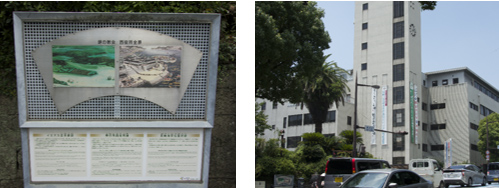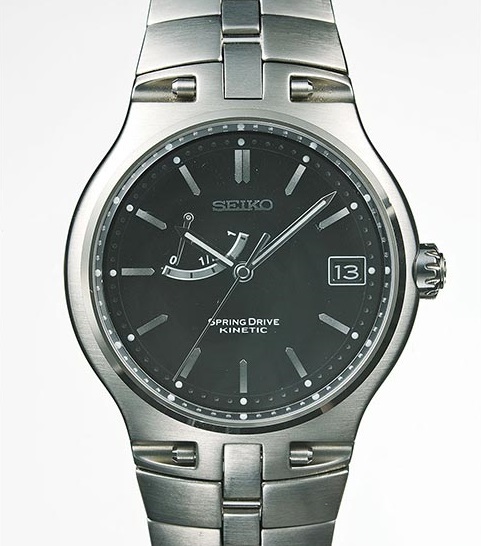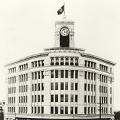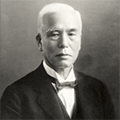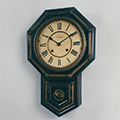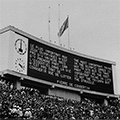Beginning of clock towers in Japan
Mechanical clocks are said to date back to the turret clocks of Christian cloisters built during the 1300s. The turret clock of Salisbury Cathedral (1386) is said to be the oldest mechanical clock in existence today.
In fact, the first turret clock in Japan was built by Christians. It was constructed in 1603 on the grounds of "Church on the Cape" (Church of the Assumption of the VirginMary), the center of Christian culture in Nagasaki at that time. It was destroyed after the Tokugawa shogunate’s Anti-Christian Edicts and no longer exists. According to an old record, the dial plate of the clock showed Western graduations written in Roman numerals, graduations of eto (Chinese zodiac) and the lunar and solar calendars. Citizens visited the clock hourly to hear the chime of the three bells and see the dial plate.
Former site of at "Church on the Cape" (Church of the Assumption of the VirginMary). After the destruction of the church, the Nagasaki Magistrate’s West office was built on the same site. Following the Meiji Restoration, the building was transformed as Nagasaki’s municipal assembly, Nagasaki Court and Nagasaki Administrative Office before becoming the prefectural office building.
Father Giovanni Nicolao, an Italian Renaissance painter, is said to have made the turret clock. A gifted painter and craftsman, he taught clock making techniques and painting at seminario and collegio (institutes for training priests). Experts estimate that Japanese clock-making techniques, which later developed into wadokei (traditional Japanese clocks), originated from the teachings of Father Nicolao.
Clock towers became a symbol of civilization
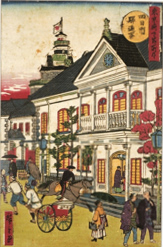
The Anti-Christian Edicts forced the clock towers, a symbol of Christianity, to disappear. However, during and after the Meiji period, clock towers re-emerged as a symbol of Westernization and modernization. The Meiji government aggressively introduced Western architecture, which led to the construction of more than 30 clock towers in Tokyo at that time. The mechanical parts for turret clocks in the Meiji period were imported by foreign traders in Yokohama and Kobe. The chimes that echoed throughout Tokyo might have been the sound of civilization. In addition to keeping time, the clock towers were novel and therefore attracted the attention of many citizens. Some of the clock towers like Toranomon Engineering College (completed in 1873) and Ministry of Posts at Yokkaichi (completed in 1874), were depicted in woodblock prints as new attractions in Tokyo.
During the Meiji period, clock towers were mainly built by clock shops, while those at schools, barracks and other government institutions were much less common. In particular, the clock tower of Kobayashi Clock Shop*1 (completed in 1876, known as the great clock of Hachikancho) and the clock tower of Kyoya Clock Shop (completed around 1876, known as the great clock of Sotokanda) were beloved by locals and considered famous attractions in Tokyo.
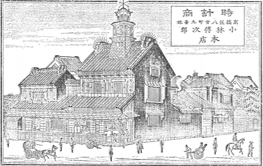
*1 Kintaro Hattori, founder of K. Hattori shop, is said to have decided to become a clock merchant when he saw Kobayashi Clock Shop, located near Tsujiya, a Western sundry wholesaler in Yakancho, Kyobashi, where he worked as an apprentice.
Tall and conspicuous, a clock tower easily attracts attention and functions as the most recognizable sign for a clock shop. Clock towers were successively built all over the city as if competing for uniqueness. They were a symbol of civilization and might have been the perfect way to provide an impression of sophistication and opulence for high-profile clock shops dealing in the most advanced imported clocks.
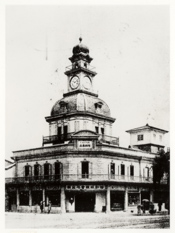
In 1894, K. Hattori shop Ltd. purchased, renovated extended the office building of Choya Newspaper, located at Ginza 4-chome and built the first clock tower. At first the tower was three-stories high, before it was extended to create a space that allowed the motor weight to hang down on the fourth floor and had a space for the clock on the fifth floor. On top was a bell that signaled the time every 30 minutes. With a total height, above the extended the 3rd floor to the top, of approx. 15.15 meters, this was considered to be an exceptionally tall building. The first clock tower was beloved by people in Ginza for 27 years, during the Meiji and Taisho periods. However, it was demolished in 1921 for renovations*2.
Most of the other clock towers built during the Meiji period disappeared due to the Great Kanto Earthquake and air raids.
※2 In 1920, the company built a temporary office in Ginza 2-chome, Kyobashi-ku, where it moved its operations. The temporary office completely burned down after the Great Kanto Earthquake, but was reconstructed by the end of November 1923, when the company resumed operations.
Completion of the second clock tower
Great Kanto Earthquake occurred on September 1, 1923, after the completion of the demolition of the first clock tower. The soil in the first basement was removed and some of the iron framework of the foundation was carried to the construction site. The construction project was cancelled and then resumed at the end of 1929. Construction work started on June 11, 1930. It was constructed by Shimizu Gumi, Ltd. (currently Shimizu Corporation) and designed by Jin Watanabe Architecture Public Office. Jin Watanabe is a representative architect of modern Japan who designed buildings in numerous styles, including the main building of Hotel New Grand (1927), Daiichi Seimeikan (1938, also head office of GHQ) and Kunizo Hara’s residence (1938, currently the Hara Museum of Contemporary Art, a masterpiece of early modern architecture).
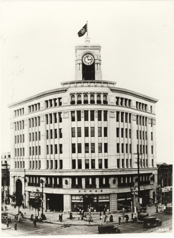
Based on a proposal by the manager of the design department of K. Hattori & Co., Ltd., it was decided that the new clock tower would be constructed in neo-Renaissance style. Intending to make the world’s best clock tower, the company was unable to decide on its design, the most important part of the overall project. As a result, the decision was postponed until one year after the start of construction. Mr. Mitsuo Watanabe (formerly Jin Watanabe Architecture Public Office) was assigned to the design of the clock tower. He repeated a cycle of creating a drawing, making a model tower and adding it to the model building. According to a memoir, he had a nervous breakdown and slept with a sketchbook by his pillow. As a result of his strenuous efforts, the world’s best clock tower was completed in Ginza. It matched nicely with the neo-Renaissance building. In June 1932, K. Hattori & Co., Ltd. returned its operations to Ginza 4-chome.
History of SEIKO HOUSE’s Clock Tower
Unchanged since 1932, the second SEIKO HOUSE Clock Tower watches over Ginza. Its accuracy has improved with its upgrades from a pendulum to quartz, and radio wave correction to GPS-based time correction. The clock is very accurate. In 1966, Seiko’s clock replaced the original. Seiko Time Creation Inc. has continued to control and inspect the clock.
First clock tower
1894 Construction of the first clock tower completed
September
Kintaro Hattori, founder of K. Hattori & Co., Ltd., acquires the office building of Choya Newspaper.
Extension assigned to Tamekichi Ito, an architect who studied earthquake-resistant architecture in the United States.
December
Extension and renovation construction completed.
| Structure of mechanical parts |
Accuracy |
Power |
|---|---|---|
| ・Manufactured in Switzerland and imported by a Yokohama-based foreign firm (J Colomb & Co.). ・The power unit was a weight type. Two large weights, one for keeping time and the other for sounding the chime (cylindrical shape with a height of 24 cm and a diameter of 18 cm), hung in the machine room below the clock tower and operated for one week after being wound. ・The 1.2-meter-long bell in the tower rang every half hour and hour. ・The graduations on the dial plate were Roman numerals. The tower had a dial plate for each of the four directions as it does today. |
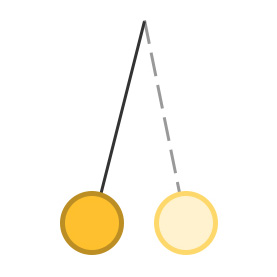 |
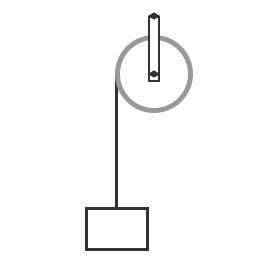 |
1895 Launches operations
January
Moves from Kobikicho 5-chome (currently Ginza 6-chome) and launches operations as K. Hattori & Co., Ltd.
Kobikicho shop becomes a branch.
1921 First clock tower demolished
Economy begins to boom and provides momentum for renovation of clock tower. First clock tower demolished to be replaced by new building.
・Mechanical clock part of first clock tower temporarily sent to Seikosha Clock Factory before being transferred to new Osaka building for K. Hattori & Co., Ltd. in 1923, remaining in service until the destruction of the building in an air raid in 1945.
1923 Great Kanto Earthquake
Construction project cancelled.
1929 Construction resumed
Second clock tower: pendulum type
1932 Construction of head office building of K. Hattori & Co., Ltd. Completed
June 10
Inauguration ceremony held for second clock tower.
June 12
K. Hattori & Co., Ltd. opens its shop.
| Structure of mechanical parts |
Accuracy |
Power |
|---|---|---|
| ・Manufactured in Germany. The clock was powered by a weight and a 1/4 horsepower motor wound by a weighted chain. ・The hands operated in 1/2 steps: the minute hand advanced every 30 seconds. Reportedly, the clocks never failed to accurately keep time, even by the minute, because an experienced engineer checked daily and made adjustments as needed. ・The dial plates, about 2.4 m in diameter, faced north, south, east and west almost accurately. The minute hand was 1.17 m and the hour hand was 0.75 m long. Supporting the two hands and withstanding the wind pressure on the seventh floor roof required a sheet of glass at least 24 mm thick, which was ordered from Belgium. ・The bell only rang hourly. |
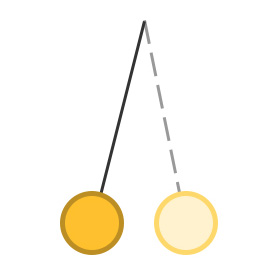 |
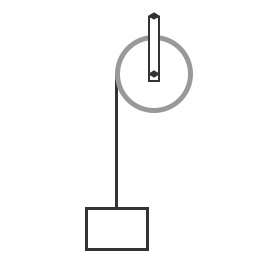 |
1945 Air raid, end of the war and requisition
January 27
Air raid hits Ginza
Luckily, the building survives undamaged, although three dial plates crack due to a bomb blast.
August
World War II ends
October
Building with clock tower requisitioned as P.X. (Post Exchange)
1947 Wako established
Wako takes over retail division of K. Hattori & Co., Ltd. and launches operations in a temporary shop.
1952 Wako officially began operations in the clock tower building.
April
The requisition as P.X. is canceled.
December
Wako relocated to the clock tower and commenced business.
1954 Hourly bell goes into service
・The clock tower rang only hourly, incorporating the sound of the Westminster chime from "Time Day" on June 10. A sound device consisting of a disk and a pipe was used for the chime.
Second clock tower: Upgrade from quartz to GPS-based time correction
1966 Seiko’s quartz introduced as the master clock
| Structure of mechanical parts |
Accuracy |
Power |
|---|---|---|
| ・The master clock was changed to a quartz one manufactured by Seiko. The signal from the quartz in the second basement operated the motor in the tower and kept time. The motor was geared so that the hands of the four dial plates advanced simultaneously. |
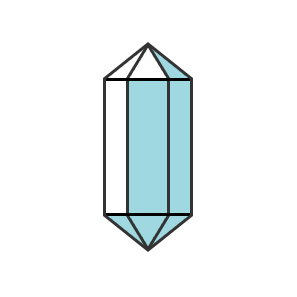 |
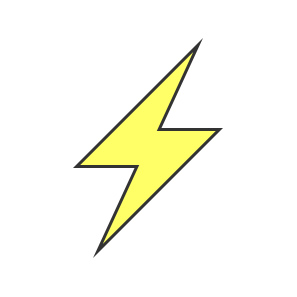 |
1974 Clock tower undergoes renovation
・Master clock switched to high-accuracy quartz.
・Tower begins to use sounds of chimes and time signals.
1983 New Year chime goes into service
1992 Second clock tower celebrates 60th anniversary
| Structure of mechanical parts |
Accuracy |
Power |
|---|---|---|
| ・Master clock upgraded to a higher-accuracy quartz. Time correction involves the use of shortwave JJY. |
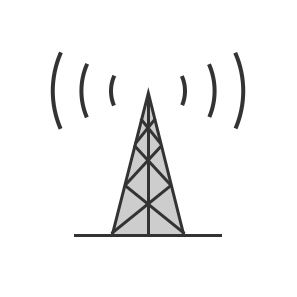 |
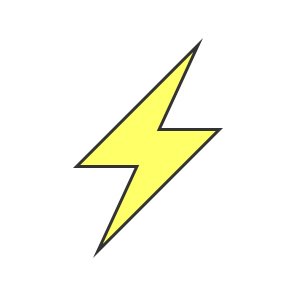 |
2002 Introduces telephone JJY system
| Structure of mechanical parts |
Accuracy |
Power |
|---|---|---|
| ・After discontinuation of shortwave JJY, time correction was automated with the telephone JJY system, a time information supply device operated by telephone lines. Unlike longwave JJY used in regular atomic clocks, telephone JJY was not influenced by the weather and was capable of keeping time even in a building that could not be reached by radio waves or underground. (Switched to the 'Optical Telephone JJY' system starting in 2022.) |
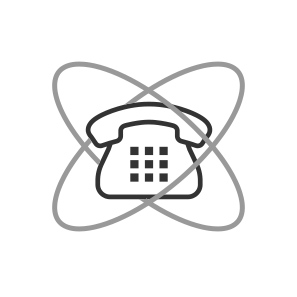 |
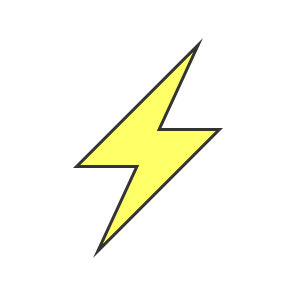 |
2004 Introduces GPS radio wave system
| Structure of mechanical parts |
Accuracy |
Power |
|---|---|---|
| ・Time correction system with GPS radio wave is introduced. It involves two master clocks to improve the backup operation. One master clock uses telephone JJY to correct and keep time in an event such as blackout. The other uses GPS radio waves to correct time. ・Hour and minute hands are changed to new ones. |
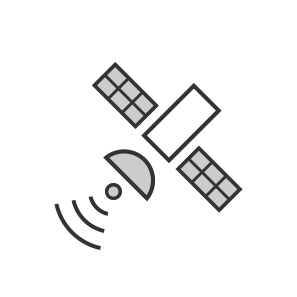 |
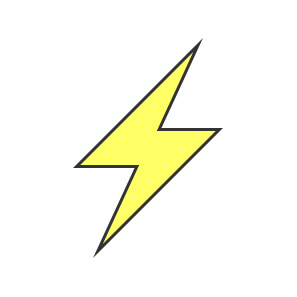 |
2008 Repair (building closed for nearly 300 days)
2009 Ministry of Economy, Trade and Industry designates clock tower as Heritage of Industrial Modernization
2017 Wako celebrates 70th anniversary
The Secrets Behind the “Face” of Ginza
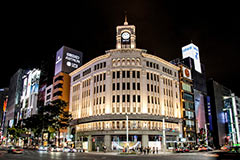
The ingenuity of SEIKO HOUSE’s Clock Tower goes beyond just its internal structure. The clock face, too, has many ingenious design features that make it beautiful and easy to read, both during the day and at night. Even today, SEIKO HOUSE’s Clock Tower adopts a glass dial face. The front surface has index markings that are engraved and painted in black ink, while the rear side is painted white. At night, the dial face is illuminated from the inside.
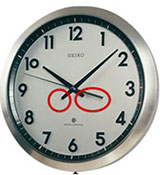
The hands of the clock were replaced and reinforced in 2004. The circles on the surface of the hands which look like holes are actually the heads of rivets used to fix the reinforcing sheets in place.
The hands of the clock adopt a tailless design (meaning they have no balancing “tail” section). Instead, they are balanced by weights attached to the inside.
Since the roof of SEIKO HOUSE’s Clock Tower is normally off limits to the public, viewing the clock at close quarters is difficult. Visitors can take a look at the full-size replica of the SEIKO HOUSE dial face from up close. When visiting the museum, take the chance to see for yourself just how big the dial face and its hands really are.
In Closing
In this section we have introduced the history of clock towers in Japan, and the story of SEIKO HOUSE’s Clock Tower.
With the help of an excellent maintenance setup, SEIKO HOUSE’s Clock Tower has continued to keep accurate time since the time of its completion. While clocks in regular facilities typically undergo maintenance inspections around once a year, SEIKO HOUSE’s Clock Tower never fails to undergo a monthly inspection.
In 2022, SEIKO HOIUSE’s Clock Tower marked the 90th anniversary of its completion. Throughout its history, the clock has been continually supported by the commitment and enthusiasm of engineers past and present. In the future, too, This Clock Tower will continue to keep accurate time, breathing tradition and innovation as an iconic symbol of Ginza.
The information in the above article was obtained in cooperation with the following companies:
Seiko Time Creation Inc. (Time System & FA Business)
Reference
・Yakichi Yoshioka: Nippon Kirishitan Junkyoshi (History of martyrdom of Christians in Japan). Jiji Press Ltd.
・Mitsuo Hirano: Meiji Tokyo Tokeitoki (Record of clock towers in Tokyo in the Meiji period). Meikeisha
・Hidetsune Ueno: Machini Ikiru Tokeitachi (Clocks that live in the town) Part 1: Tokyo. Clock Culture Laboratory
・LIXIL Corporation: INAX Report No.183, June 2010
・In-house newsletter of Wako Co., Ltd.: Tokeito (Clock tower)
・Wako Co., Ltd.: Tokeitono Omoide (Memories of the clock tower) (Publication commemorating the 50th anniversary of the clock tower)
・Wako Co., Ltd.: Ginza-no Symbol Wako-no Tokeito (Wako Clock Tower, symbol of Ginza)
・Yomiuri Shimbun Tokyo Edition: Ginza Hitogatari (Story told by the people in Ginza) (3), January 4, 2000
・Mitsuo Hirano: Company History of Seikosha. Seikosha.


